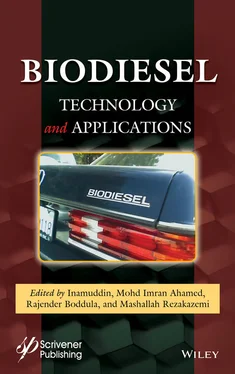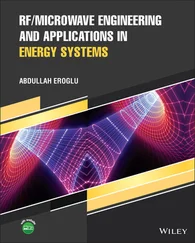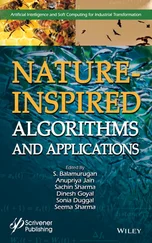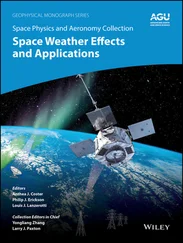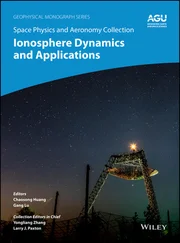1 Cover
2 Title page
3 Copyright
4 Preface
5 1 Biocatalytic Processes for Biodiesel Production 1.1 Introduction and Background 1.2 Importance of Biodiesel Over Conventional Diesel Fuel 1.3 Substrates for Biodiesel Production 1.4 Methods in Biodiesel Production 1.5 Types of Catalysts Involved in Biodiesel Production 1.6 Factors Affecting Enzymatic Transesterification Reaction 1.7 Lipases as Biocatalysts for Biodiesel Production 1.8 Comparative Analysis of Intracellular and Extracellular Lipases for Biodiesel Production 1.9 Recombinant Lipases for Cost-Effective Biodiesel Production 1.10 Immobilization of Lipases for Better Biodiesel Production 1.11 Recent Strategies to Improve Biodiesel Production 1.12 Lipase Catalyzed Reaction Modeling and Statistical Approaches for Reaction Optimization 1.13 Conclusion and Summary References
6 2 Application of Low-Frequency Ultrasound for Intensified Biodiesel Production Process 2.1 Current Fossil Fuel Scenario 2.2 Biodiesel 2.3 Transesterification 2.4 Challenges for Improved Biodiesel Production 2.5 Homogeneous Catalyst for Biodiesel Production 2.6 Heterogeneous Catalyst for Biodiesel Production 2.7 Immiscibility of the Reactants 2.8 Ultrasound-Assisted Biodiesel Production Process 2.9 Conclusions Acknowledgement References
7 3 Application of Catalysts in Biodiesel Production 3.1 Introduction 3.2 Homogeneous Catalysis for the Biodiesel Production 3.3 Heterogeneous Catalyst 3.4 Biocatalysts 3.5 Conclusion References
8 4 Hydrogenolysis as a Means of Valorization of Biodiesel-Derived Glycerol: A Review 4.1 Introduction 4.2 Ways of Valorization of Biodiesel-Derived Glycerol 4.3 Hydrogenolysis of Glycerol 4.4 Conclusion References
9 5 Current Status, Synthesis, and Characterization of Biodiesel 5.1 Introduction 5.2 Status of Biodiesel in India 5.3 Biodiesel Production in India 5.4 Properties of Biodiesel 5.5 Analytical Methods 5.6 Conclusion References
10 6 Commercial Technologies for Biodiesel Production Abbreviation 6.1 Introduction 6.2 Biodiesel Production 6.3 Technologies Used for Biodiesel Production 6.4 Other Technologies in Use for Biodiesel Production 6.5 Feedstock Requirement 6.6 Some Problems Facing Commercialization of Biodiesel in Africa 6.7 Case Studies/Current Status and Future Potential 6.8 Conclusions Acknowledgments References
11 7 A Global Scenario of Sustainable Technologies and Progress in a Biodiesel Production 7.1 Introduction 7.2 Current Status of Feedstock for Biodiesel Production Technology 7.3 Scenario of Biodiesel in Combustion Engine 7.4 Biodiesel Production Technologies 7.5 Microwave-Mediated Transesterification 7.6 Ultrasound-Mediated Transesterification 7.7 Catalysis in Biodiesel Production 7.8 The Concept of Biorefinery 7.9 Summary and Outlook 7.10 Conclusion References
12 8 Biodiesel Production Technologies 8.1 Introduction 8.2 Biodiesel Feedstocks 8.3 Biodiesel Production Technologies 8.4 Intensification Techniques for Biodiesel Production 8.5 Other Techniques of Biodiesel Production References
13 9 Methods for Biodiesel Production 9.1 Selection of Feedstock for Biodiesel 9.2 Methods for Biodiesel Production References
14 10 Non-Edible Feedstock for Biodiesel Production List of Abbreviations 10.1 Introduction 10.2 Reports Relevant to Global Warming and Renewable Energy 10.3 Biofuels as an Alternative Energy Source 10.4 Benefits of Using Biodiesel 10.5 Technologies of Biodiesel Production From Non-Edible Feedstock 10.6 Biodiesel Production by Transesterification 10.7 Non-Edible Feedstocks for Biodiesel Production 10.8 Fuel Properties of Biodiesel Obtained From Non-Edible Feedstock 10.9 Advantages of Non-Edible Feedstocks 10.10 Economic Importance of Biodiesel Production 10.11 Conclusions Acknowledgments References
15 11 Oleochemical Resources for Biodiesel Production 11.1 Introduction 11.2 Definition of Oleochemicals 11.3 Oleochemical Types 11.4 Production of Biodiesel 11.5 Types of Feedstocks 11.6 Uses of Oleochemicals 11.7 Methyl Ester or Biodiesel Production 11.8 Parameters Affecting the Yield of Biodiesel 11.9 Optimization of Reactions Conditions for High Yield and Quality of Biodiesel 11.10 Oil Recovery 11.11 Quality Improvement of Biodiesel 11.12 Conclusion Abbreviations References
16 12 Overview on Different Reactors for Biodiesel Production 12.1 Introduction 12.2 Biodiesel Production Reactors 12.3 Future Prospects 12.4 Conclusion References
17 13 Patents on Biodiesel 13.1 Introduction 13.2 Generation of Biodiesel 13.3 Development of Catalyst 13.4 Method Producing Biodiesel 13.5 Reactor’s Technology for Biodiesel Production 13.6 Conclusion References
18 14 Reactions of Carboxylic Acids With an Alcohol Over Acid Materials 14.1 Introduction 14.2 Zeolites 14.3 SO 3H as Catalyst 14.4 Metal Oxides 14.5 Heteropolyacids 14.6 Other Materials 14.7 Conclusions References
19 15 Biodiesel Production From Non-Edible and Waste Lipid Sources 15.1 Introduction 15.2 Non-Edible Plant-Based Oils 15.3 Waste Animal Fats 15.4 Expired and Waste Cooking Oils 15.5 Algae/Microalgae 15.6 Insects as Biodiesel Feedstock 15.7 Deacidification 15.8 Other Technologies 15.9 Conclusion References
20 16 Microalgae for Biodiesel Production 16.1 Introduction 16.2 Physicochemical Properties of Biodiesel From Microalgae 16.3 Genetic Engineering/Techniques Enhancing Biodiesel Production 16.4 Nanotechnology in Microalgae Biodiesel Production 16.5 Specific Examples of Biodiesel Production From Microalgae 16.6 Methodology Involved in the Extraction of Algae 16.7 Conclusion and Future Recommendation to Knowledge References
21 17 Biodiesel Production Methods and Feedstocks 17.1 Introduction 17.2 Biofuel Classification in Terms of Origin and Technological Conversion of Raw Materials 17.3 Techniques Capable of Producing Biodiesel on Commercial Scales 17.4 Influential Parameters on Biodiesel Production 17.5 Biodiesel Markets and Economic Considerations 17.6 Challenges Confronting Biodiesel Uptake 17.7 Corrosion and Quality Monitoring Issues for Biodiesel 17.8 Conclusions References
22 18 Application of Nanoparticles for the Enhanced Production of Biodiesel 18.1 Introduction 18.2 Solid Nanoparticles 18.3 Nanobioparticles/Nanobiocatalyst 18.4 Magnetic Nanoparticles 18.5 How Nanoparticles Enhanced Biodiesel Production? 18.6 Conclusion References
23 Index
24 Also of InterestCheck out these other forthcoming and published titles from Scrivener Publishing Books by the same editor from Wiley-Scrivener Other books on this subject from Wiley-Scrivener
25 End User License Agreement
1 Chapter 2 Figure 2.1 Transesterification of triglycerides for the production of biodiesel. Figure 2.2 Approximate frequency ranges of sound with rough guide of some source... Figure 2.3 Different options of ultrasound application for biodiesel production. Figure 2.4 Principle of ultrasound-induced acoustic cavitation bubbles.
2 Chapter 3Figure 3.1 The different catalytic methods for the biodiesel production.Scheme 3.1 Soap formation in the presence of free fatty acids with the base cata...Scheme 3.2 General esterification reaction mechanism in the presence of an acid ...Scheme 3.3 Acid-catalyzed transesterification of TG (i) Protonation of carbonyl ...Scheme 3.4 Alkali catalyzed transesterification of TG (i) formation alkoxide ion...Figure 3.2 The block diagram for base-catalyzed biodiesel production.Scheme 3.5 Soap formation in the presence of water and base catalyst.Figure 3.3 The flow diagram of synthesis of SZ from zirconium oxychloride octahy...Figure 3.4 Synthesis of (a) ZrO 2-TiO 2nanorods, (b) ZrO 2– TiO 2@SO 4 2–nanorods, ...Figure 3.5 Synthesis of sulfonated acid catalyst from the biomass (DOWC) using c...Scheme 3.6 Alkaline earth metal oxides catalyzed transesterification of TG.Figure 3.6 Calcination and rehydration of Mg-Al hydrotalcite for the biodiesel p...Figure 3.7 Functionalization of MCM-41 surface with guanidine derivative (1,5,7-...Figure 3.8 Different methods for immobilization of enzymes. (Adapted from Ref. [...Figure 3.9 Encapsulation of ultrasound treated lipase within metal-organic frame...Figure 3.10 Lipase from Candida rugosa immobilization onto micro-porous biosilic...Figure 3.11 L62 lipase immobilization using adsorption/entrapment and adsorption...
Читать дальше
